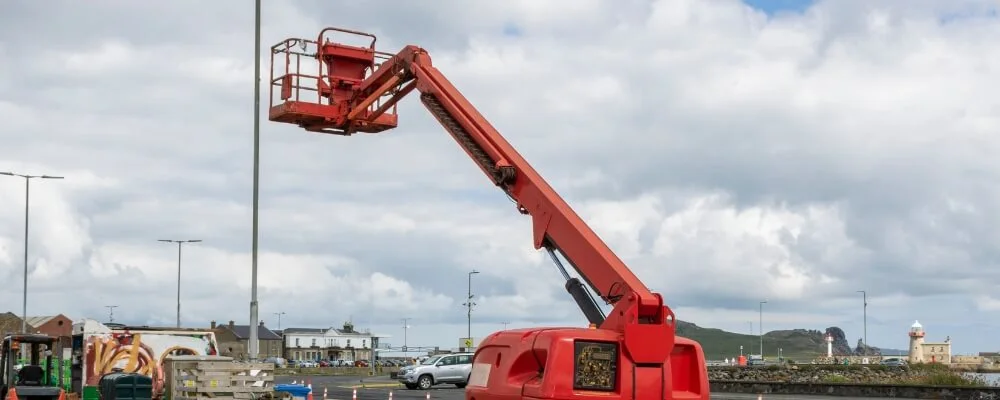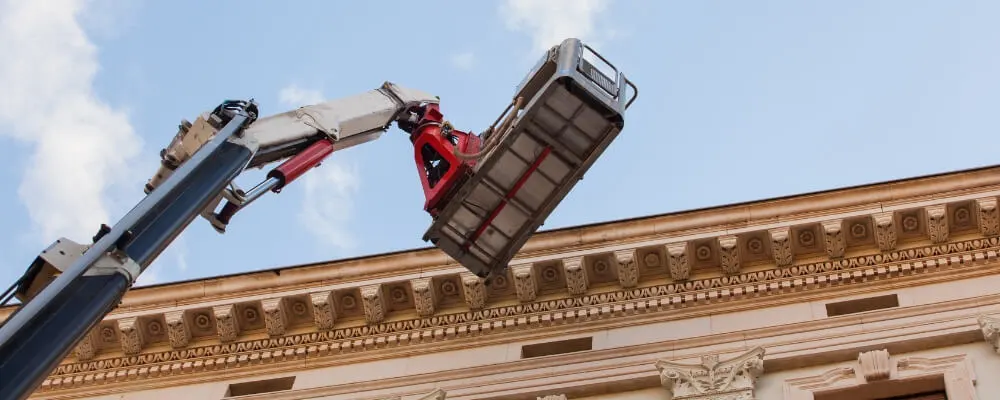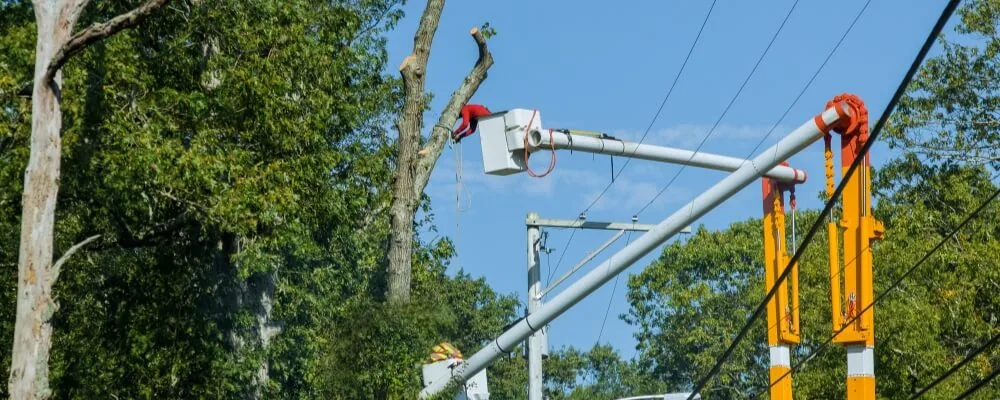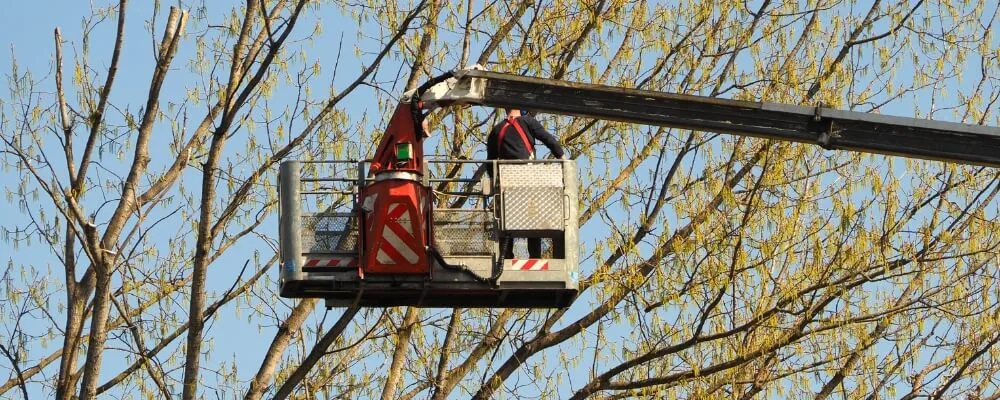Mobile Elevated Work Platforms (MEWPs) are crucial across various industries for performing tasks at elevation, bringing with them a host of unique challenges and potential hazards. A meticulous MEWP Rescue Plan is indispensable in this context, serving as a comprehensive guide to dealing with different emergency scenarios that might occur during operations. This plan delineates detailed procedures to manage risks, secure the safety of operatives, and ensure timely, coordinated responses in emergency situations, thus playing an integral role in fostering a safer working environment during elevated work endeavors.
Delving into the different emergency scenarios, including the failure of controls and situations involving incapacitated operatives, it becomes clear that each necessitates distinct, well-rehearsed responses to preserve the well-being of all involved personnel. The development of an effective rescue plan requires the careful consideration of several factors, including type of MEWP, risk assessment, work environment, legal compliance, and more.
In the following discussion, we will explore the intricacies of the MEWP Rescue Plan, the varying emergency scenarios, and the pivotal elements to consider in formulating a robust and practical rescue strategy, aiming to enlighten organizations seeking to uphold stringent safety standards in elevated work operations.
What’s MEWP Rescue?
A MEWP (Mobile Elevated Work Platform) Rescue Plan is an essential component in operational planning when using elevated work platforms. This plan outlines the procedures to be followed to safely rescue personnel in various emergency situations where normal control functions have failed or the operator is in distress.

Importance Of MEWP Rescue Plan
The importance of a Mobile Elevated Work Platform (MEWP) Rescue Plan cannot be overstated, given the inherent risks associated with working at height and the various potential emergency scenarios that may arise during operations. Here’s a detailed elucidation of the significance of having a comprehensive MEWP Rescue Plan in place:
1. Enhances Safety
A MEWP Rescue Plan is fundamental for ensuring the safety of operators and other personnel. By addressing various emergency scenarios and outlining specific response procedures, it minimizes the risks associated with malfunctions or accidents, reducing the likelihood of injuries or fatalities.
2. Ensures Compliance
Having a well-detailed rescue plan is also crucial for complying with occupational safety and health regulations. Compliance with such standards is not only a legal requirement but also demonstrates a commitment to maintaining a safe working environment, thus fostering a culture of safety within the organization.
3. Streamlines Emergency Response
A comprehensive rescue plan provides clear and concise instructions for handling different emergency situations, enabling a swift and coordinated response. This expedites the rescue process, thereby potentially reducing the severity of any injuries and ensuring the well-being of the affected individual(s).
4. Reduces Downtime
By facilitating quick resolutions in emergency situations, the rescue plan helps in minimizing operational downtime. This is crucial for maintaining productivity and avoiding delays in project timelines, thereby contributing to overall operational efficiency.
5. Provides Clear Roles and Responsibilities
Outlining specific roles and responsibilities for each individual involved in the rescue process ensures that everyone knows what is expected of them in an emergency. This eliminates confusion and allows for a more organized and effective response, ensuring that every aspect of the rescue operation is addressed.
6. Builds Confidence among Operators
Knowing that there is a well-thought-out plan in place can build confidence among MEWP operators and other site personnel. This can lead to increased morale and productivity as employees feel that their safety is a priority and that they are well-protected in the event of an emergency.
7. Promotes Training and Preparedness
The implementation of a rescue plan necessitates regular training and drills. This fosters a heightened state of readiness among operators and rescue personnel, ensuring that they are well-equipped with the knowledge and skills required to handle emergency situations effectively.
8. Facilitates Communication
A structured rescue plan emphasizes the importance of clear and effective communication during emergencies. This is crucial for coordinating rescue efforts and ensuring that accurate information is relayed promptly, thus aiding in the successful execution of the rescue operation.
9. Mitigates Legal and Financial Risks
In the event of an accident, having a well-documented and implemented rescue plan can mitigate legal repercussions and potential financial liabilities by demonstrating due diligence and a proactive approach to worker safety.
10. Prioritizes Medical Assistance
The emphasis on immediate medical assessment and intervention in a rescue plan ensures that any injured personnel receive timely and appropriate medical care, thus addressing their health needs and preventing complications.

Different Emergency Scenarios and MEWP Rescue Plan
A Mobile Elevating Work Platform (MEWP), commonly known as a cherry picker or aerial lift, is a piece of equipment used in various industries for tasks that require elevated access. When working with MEWPs, it’s essential to have a rescue plan in place for emergency scenarios. Here are some different emergency scenarios involving MEWPs and corresponding rescue plans:
1. Failure of Basket Control Functions While Elevated
In this scenario, the normal upper control functions fail, leaving the operator stranded at an elevated position. The plan is for a trained operative to use the auxiliary controls from the platform to safely lower the boom to the ground.
This situation necessitates swift action to avoid any prolonged distress to the operator, and the presence of a trained operative on the site is crucial to execute the lowering of the platform efficiently. The immediate use of auxiliary controls serves as the initial response to rectify the failure and safely conclude the operation.
2. Failure of Basket Controls and Ground Controls
This is when both the basket and ground controls fail to work, leading to a more complex emergency scenario. Here, the plan is for a trained operative to use the emergency auxiliary controls to lower the person back to the ground level or to the nearest safe working platform, such as installed decking.
The procedure needs to be executed with precision to avoid any further complications, ensuring the safety of the stranded person. The importance of having multiple controls becomes pivotal in such situations where the primary controls fail, necessitating the use of secondary and emergency auxiliary controls.
3. Failure of All Controls (Basket, Ground, and Auxiliary Controls)
In the unfortunate event of all backup controls failing, immediate contact is made with the machine supplier, requesting an engineer to lower the basket. Meanwhile, every effort is made to keep the operator calm while awaiting assistance.
This situation is particularly challenging due to the complete failure of the machine’s operational controls, and the arrival of an engineer becomes crucial for the safe rescue of the stranded operator. Maintaining the operator’s composure in this situation is vital to prevent any panic-induced accidents while professional help is on the way.
4. Unconscious Operative within the Basket
If an operative is found unconscious within the basket at height, emergency services must be contacted immediately, and the Supervisor must be informed. Following the prescribed rescue plans for situations 1, 2, or 3, the basket is then lowered. In such a critical condition, every second counts, and immediate medical intervention is needed once the operative is brought down.
The quick relay of information to the emergency services and the supervisor ensures a swift response and action to provide the necessary medical attention to the unconscious operative.
5. A person Thrown from the Basket but is Conscious
In instances where the operative is thrown from the basket but remains conscious, being suspended by their work restraint lanyard, emergency services must be contacted immediately. The priority is to quickly get the suspended operative to the ground level as safely as possible or support them mid-air, depending on the feasibility and existing obstructions.
Clear and immediate communication with the emergency services and the execution of the appropriate rescue procedure is vital to alleviate any immediate danger or distress to the suspended operative.

6. A person is Thrown from the Basket and is Unconscious
This is a critical scenario where the operative is thrown from the basket and is unconscious. The emergency services must be contacted immediately, and the Supervisor must be informed. Rescue proceeds as per situation 5, focusing on addressing the operative’s immediate medical needs and potential injuries.
The rapid response in informing the emergency services and the supervisor is crucial for immediate medical intervention, ensuring that the unconscious operative receives timely and appropriate medical care to address their condition.
7. Training and Drills
Regular training and drills are imperative for enhancing the skills and response times of all operatives and rescue personnel working with Mobile Elevated Work Platforms (MEWPs). It is crucial for everyone involved to be well-versed in their roles and responsibilities during an emergency. This preparedness can lead to more streamlined operations and can significantly reduce the response time in the event of an emergency, potentially preventing any severe injuries or fatalities.
The objective of continual training is to instill a heightened sense of awareness and operational efficiency in the workforce, enabling them to react promptly and effectively when faced with unexpected situations.
8. Risk Assessment
Undertaking a comprehensive risk assessment before using MEWP is crucial to identify potential hazards and implement control measures proactively. This process involves a meticulous examination of all aspects and stages of MEWP operation, scrutinizing every potential risk factor and establishing mitigative steps to counteract identified risks.
The aim is to create a safer working environment and to preemptively address any safety concerns that may arise during the operation of MEWPs. A thorough risk assessment not only contributes to the overall safety of the operative but also safeguards the well-being of all personnel present on the site.
9. Communication
Having effective communication tools and protocols in place is vital for maintaining operational integrity and managing emergency situations proficiently. Clear and concise communication is essential during emergencies, as it allows for accurate information to be relayed quickly, preventing misunderstandings and delays in response.
The establishment of robust communication protocols ensures that all relevant parties, including operatives, rescue personnel, supervisors, and emergency services, are well-informed and can coordinate seamlessly to address the situation at hand. Efficient communication is pivotal in orchestrating successful rescue operations and in mitigating the impacts of any unforeseen incidents.
10. Medical Assistance
Providing immediate medical assessment and first aid to rescued personnel is an essential step in managing post-rescue scenarios. Prompt medical attention can prevent the escalation of injuries and can provide immediate relief to the affected individuals. It is also crucial to arrange for further medical help if the initial assessment deems it necessary to address any underlying medical conditions or severe injuries adequately.
The emphasis on quick medical assistance is aimed at ensuring the well-being of the personnel involved, prioritizing their health and safety, and providing immediate medical intervention to mitigate the adverse effects of any injuries sustained during the incident.

Factors To Consider When Developing MEWP Rescue Plan
When developing an MEWP (Mobile Elevated Work Platform) Rescue Plan, various factors need to be meticulously considered to ensure the comprehensive safety and efficiency of the rescue procedures. Here’s a detailed exploration of those factors:
1. Type of MEWP
Understanding the specific type of MEWP being used is critical, as different types may have varying controls, limitations, and potential hazards. This knowledge enables the formulation of a more tailored and effective rescue plan.
2. Risk Assessment
Before developing a rescue plan, a thorough risk assessment must be conducted to identify any potential hazards associated with the MEWP operation. The rescue plan should address these identified risks and provide mitigative and responsive measures.
3. Operative Proficiency
The proficiency and training level of the operators and rescue personnel must be considered. The rescue plan should incorporate procedures that are aligned with the skills and knowledge level of the personnel involved, and it should also define the training requirements to ensure all operatives are proficient.
4. Location and Work Environment
The site location, environmental conditions, and the nature of the work being undertaken can significantly impact the development of the rescue plan. Factors such as weather conditions, terrain, and proximity to medical facilities must be taken into account.
5. Equipment Availability
Availability and accessibility of rescue equipment and first aid supplies are vital. The rescue plan should list all necessary equipment and ensure that it is readily available and in proper working condition during MEWP operations.
6. Roles and Responsibilities
Clearly defining the roles and responsibilities of everyone involved in the rescue operation is essential to avoid confusion and ensure that every aspect of the rescue is handled efficiently and promptly.

7. Communication Protocols
Establishing effective communication protocols is critical for coordinating rescue efforts and relaying accurate information quickly during emergencies. The rescue plan should detail the communication tools and protocols to be used.
8. Emergency Contact Details
The rescue plan should incorporate a comprehensive list of emergency contact details, including the nearest medical facilities, emergency services, and relevant personnel within the organization.
9. Medical Assistance
Procedures for providing immediate medical assessment and first aid to the rescued personnel must be included, and arrangements for further medical help should be detailed in the plan.
10. Drills and Training
The frequency and type of drills and training sessions should be considered to ensure that all personnel are well-prepared and familiar with the rescue procedures.
11. Legal and Compliance Requirements
Understanding and integrating all legal and compliance requirements related to MEWP operations and rescue procedures is crucial to ensure that the plan adheres to relevant safety standards and regulations.
12. Review and Updates
Establishing a schedule for regularly reviewing and updating the rescue plan is important to incorporate any changes in equipment, personnel, regulations, or work environment, ensuring that the plan remains current and effective.
By carefully considering these factors, organizations can develop a robust and comprehensive MEWP Rescue Plan that adequately addresses the inherent risks and ensures the safety and well-being of all involved personnel.
Conclusion
In conclusion, the implementation and understanding of a MEWP Rescue Plan are fundamentally critical in ensuring the safety and well-being of operatives using Mobile Elevated Work Platforms. The myriad of potential emergency scenarios, each with its unique set of challenges, requires a proactive approach in planning and response to minimize risks and manage crises efficiently.
By acknowledging and preparing for the various emergencies that can arise during the operation of MEWPs, organizations can significantly reduce downtime, financial loss, and, most importantly, human injury or fatality.
The development of a robust and effective MEWP Rescue Plan is not a one-size-fits-all endeavor but rather a meticulous process, requiring careful consideration of several integral factors, including the type of MEWP, the surrounding environment, legal compliance, and operative proficiency, among others.
Regular training, drills, and reviews are essential to ensuring that all involved personnel are well-acquainted with the protocols and can respond swiftly and appropriately when emergencies occur. By adhering to these principles and continuously striving for enhanced safety measures, organizations can contribute to creating a more secure and efficient working environment in elevated work scenarios.

